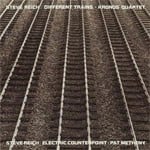Orchesterbesetzung
This work requires additional technological components and/or amplification.
Abkürzungsverzeichnis (PDF)
Verlag:
Boosey & Hawkes (Hendon Music)
Vertriebsgebiet
Dieses Werk ist erhältlich bei Boosey & Hawkes
in der ganzen Welt.
Verfügbarkeit
Uraufführung
02/11/1988
Queen Elizabeth Hall, London
Kronos Quartet
Anmerkungen des Komponisten
Hintergrund
Themen
Empfohlene Aufnahme

Kronos Quartet
Nonesuch 79176
Links

